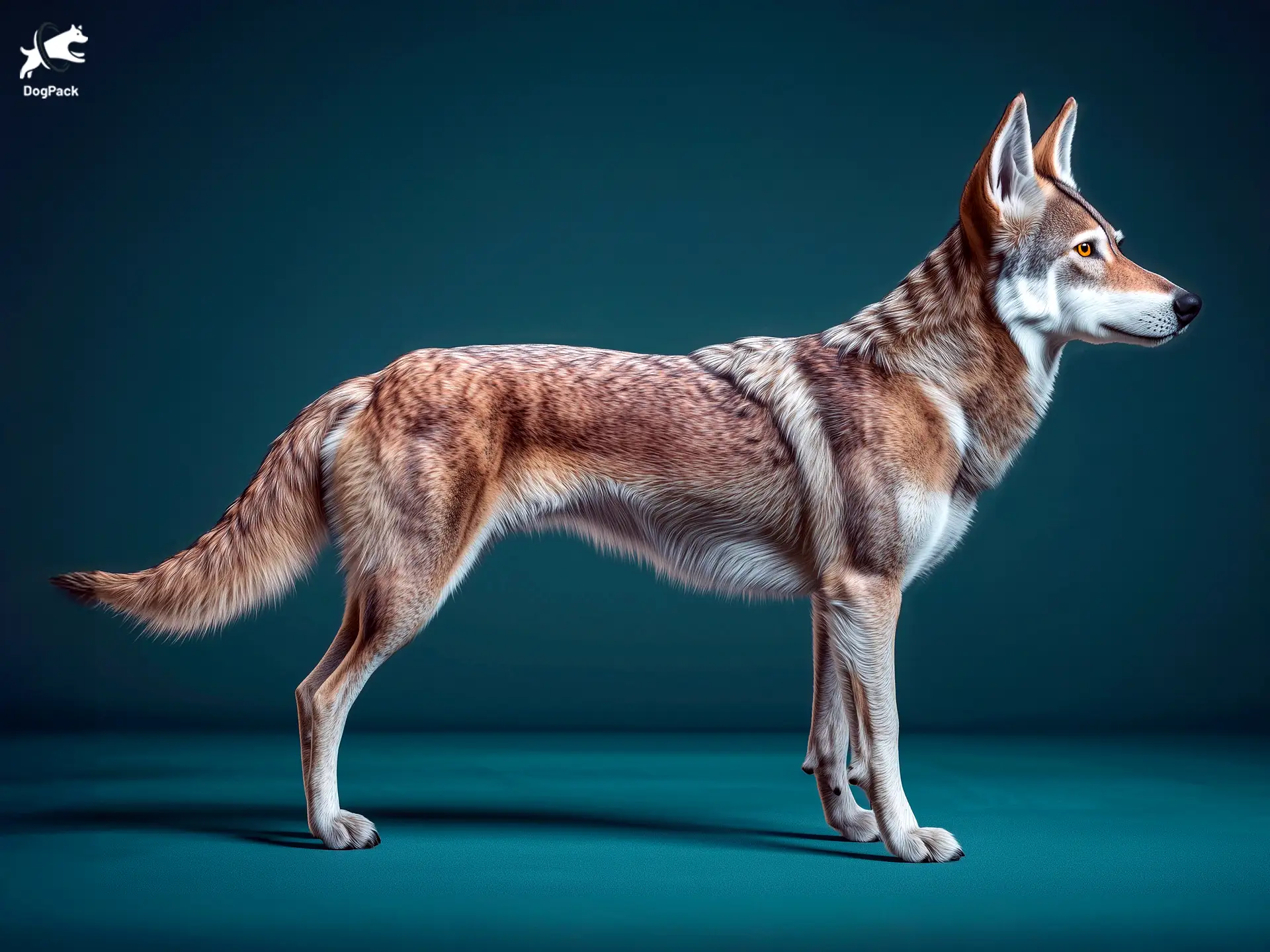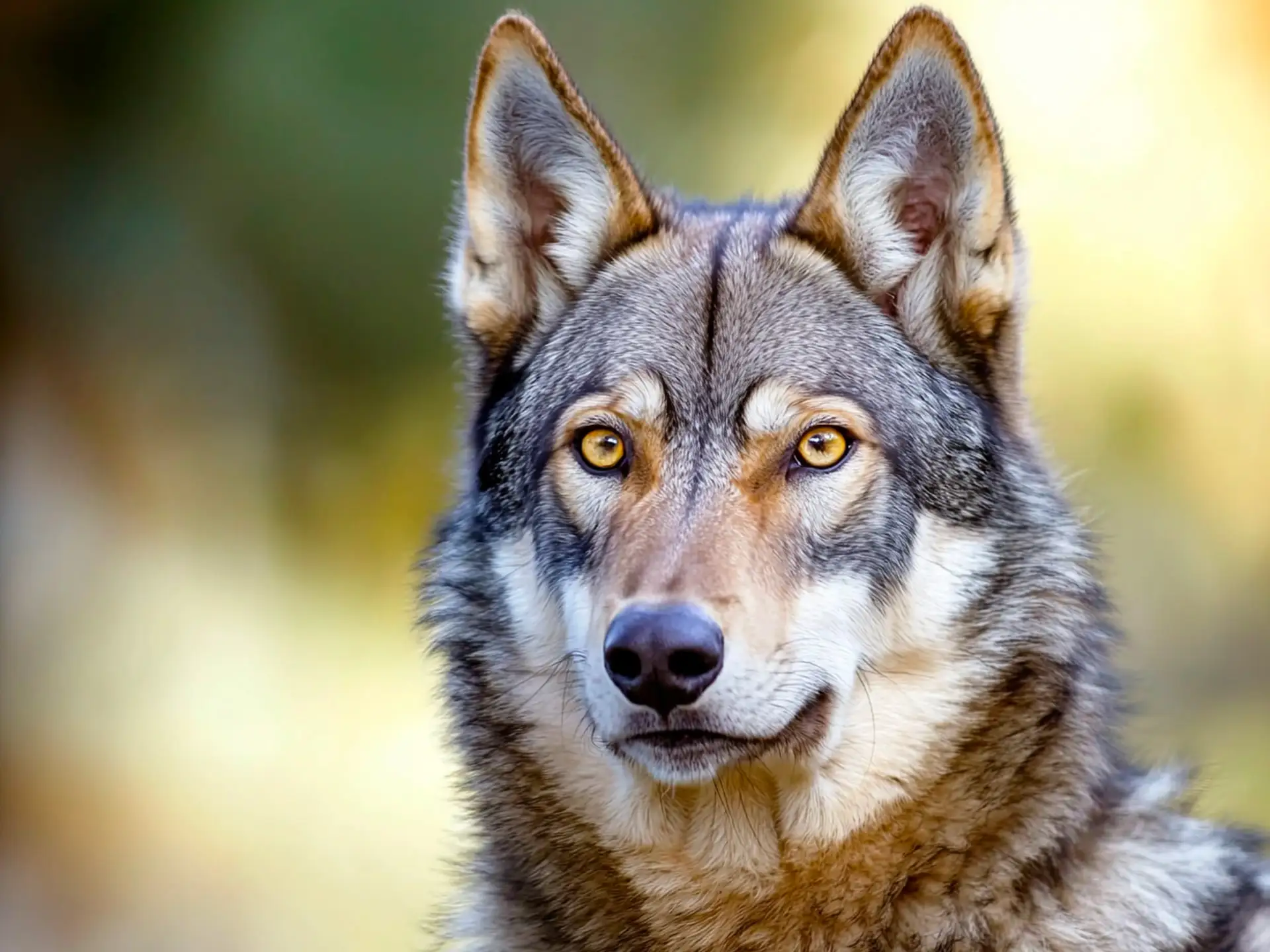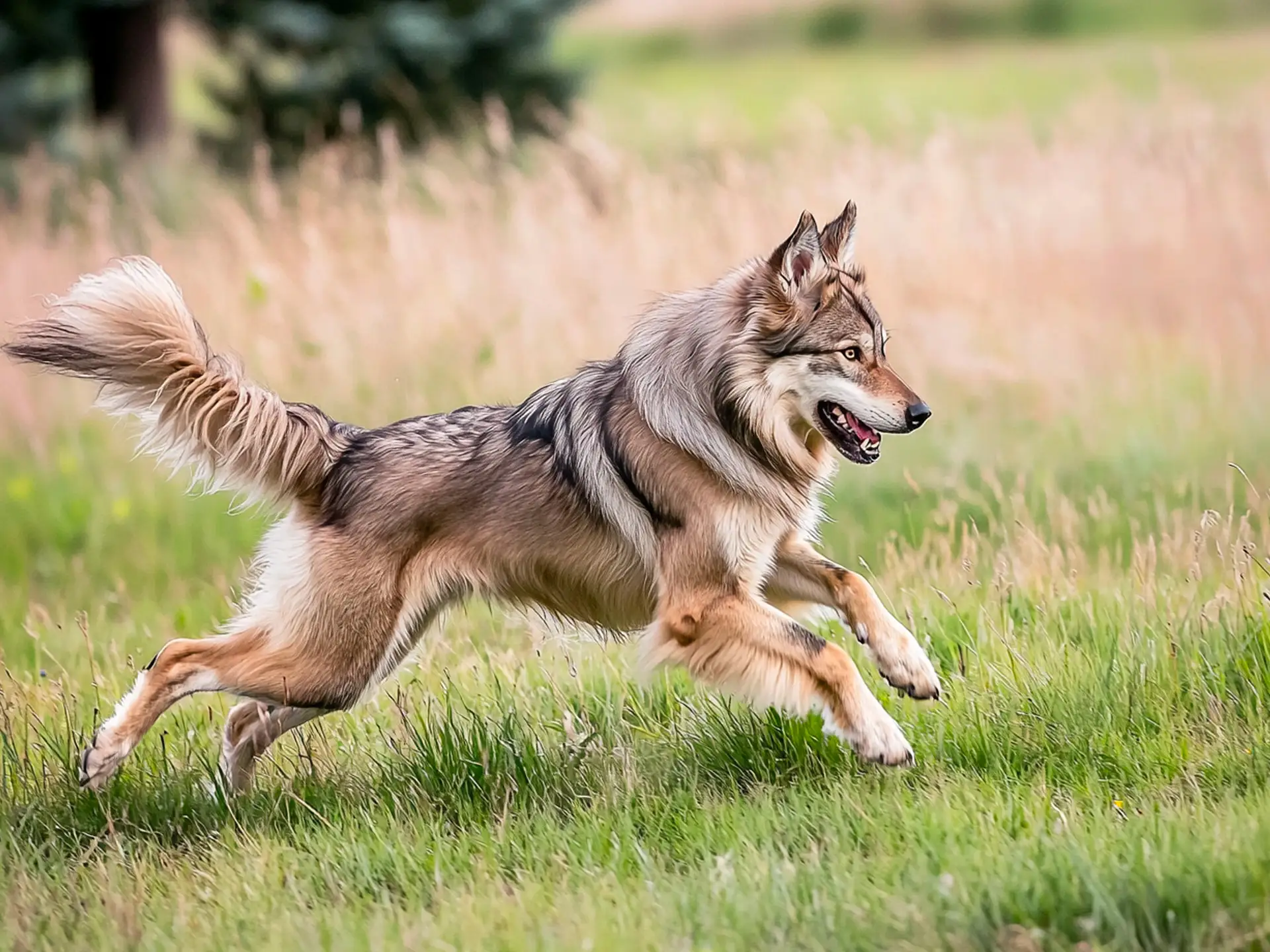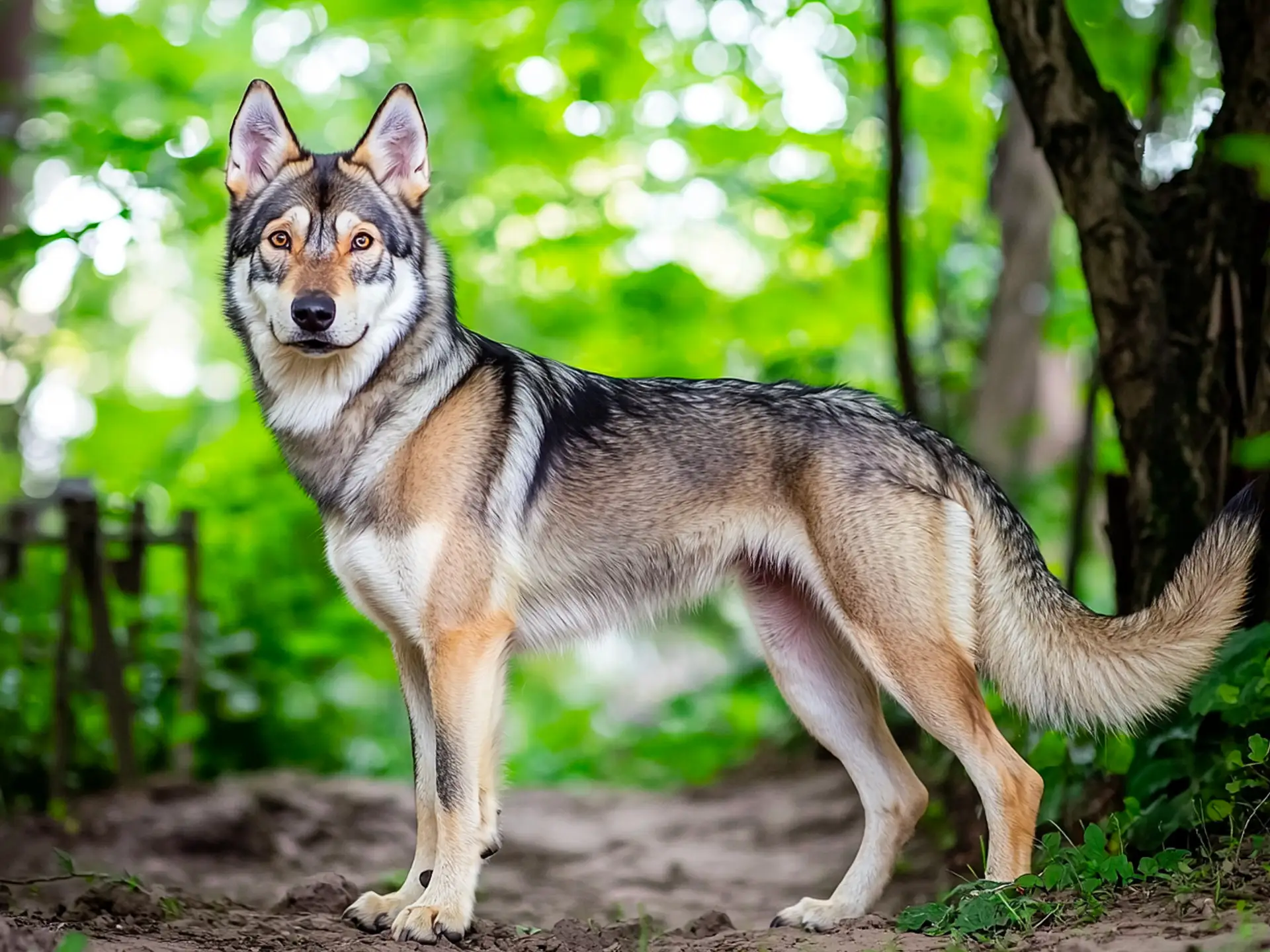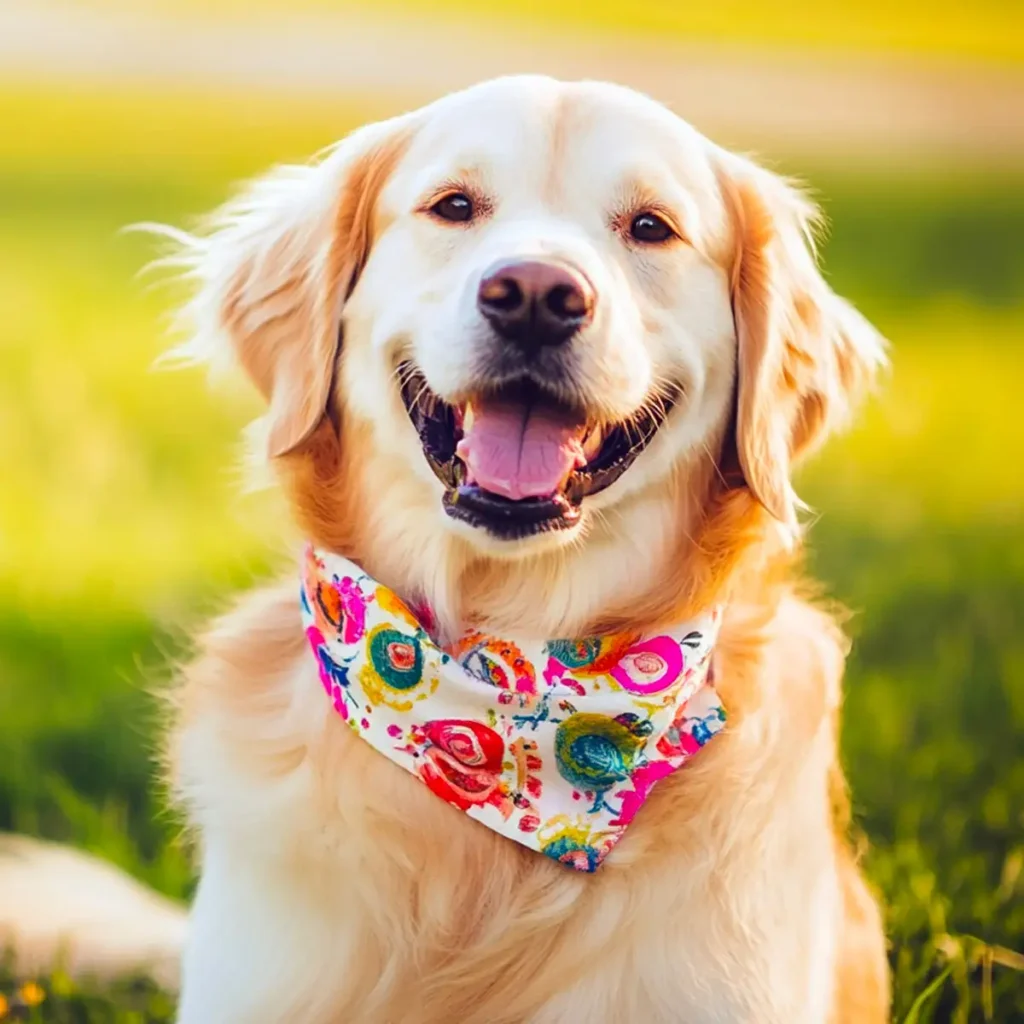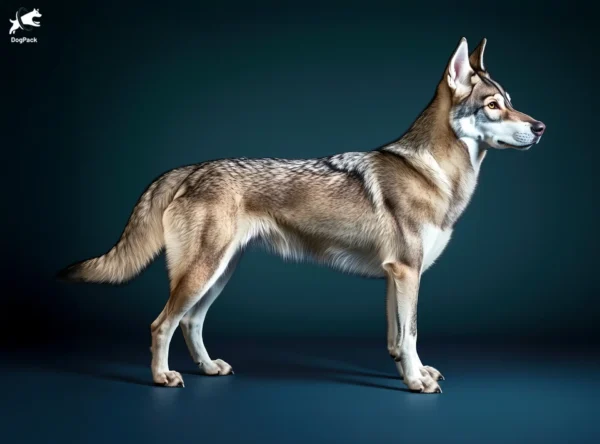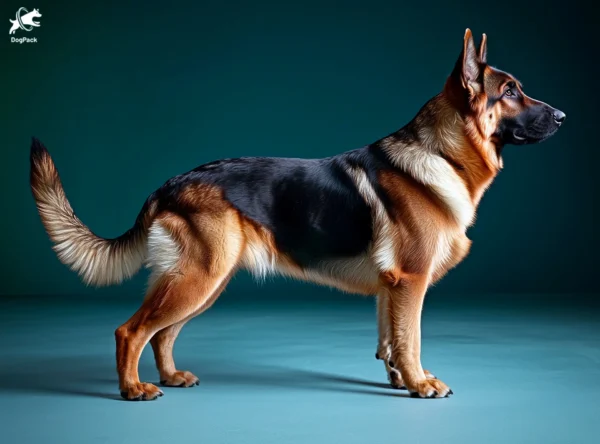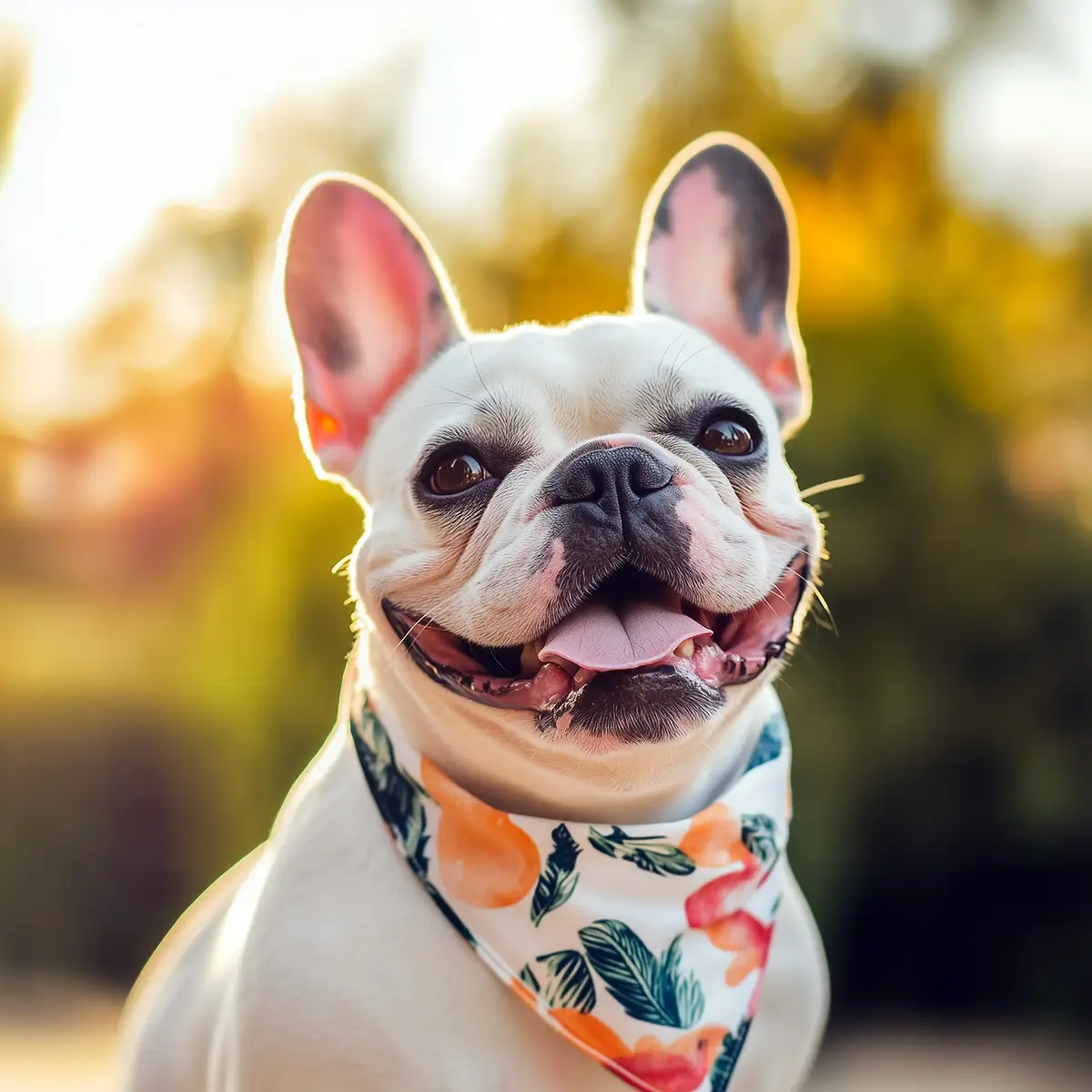Saarloos Wolfdog Breed Info & Overview
This striking wolf-like breed, hailing from the Netherlands, is known for its keen intelligence, strong loyalty, and natural independence. The Saarloos Wolfdog stands out for its rare lineage and captivating appearance, blending ancestral wolf traits with a domesticated canine spirit. It’s a dog that intrigues enthusiasts and challenges owners, offering a uniquely intense companionship experience.
Characteristics
Pictures
Breed History
In the early 20th century, a Dutch breeder named Leendert Saarloos sought a strong working dog with heightened wolf instincts. He crossed a German Shepherd with a European wolf, creating a line that would eventually become recognized as the Saarloos Wolfdog. Over time, selective breeding refined their traits, shaping a resilient companion that retains intriguing, ancient wolf heritage.
By the mid-1900s, the breed gained official recognition in Europe, earning respect among enthusiasts who appreciated its natural strength and primal aura. The intentional balance of canine trainability and lupine caution forged a dog capable of robust tasks, but not entirely predictable to novice owners. These roots give the breed a certain mystique that continues to fascinate.
Today, this rare Dutch breed remains relatively uncommon, cherished by those who understand its unique background. As you dig deeper into its past, you uncover the legacy of a devoted breeder’s vision, one that combined wild ancestry and domestic traits. This history explains their intense loyalty, alert presence, and the subtle echoes of their wolf ancestors that linger beneath the surface.
Temperament, Personality
Quietly observant, these dogs prefer to watch before acting, often displaying a reserved demeanor around strangers. Once trust is earned, their devotion to family members is profound. The Saarloos Wolfdog may form deep bonds with one or two people, expecting mutual respect and patience. Don’t be surprised if they study your habits as closely as you observe theirs.
With children, they can be gentle yet cautious, especially if raised together from a young age. Still, supervision is vital due to their size and natural wariness. When it comes to other pets, a slow, careful introduction helps ensure harmony. Their independent streak means they won’t be the “life of the party” dog, but rather the quietly confident observer.
Strangers might initially meet a distant gaze and a hesitant posture. Give them time, and the dog’s wariness often melts into a composed neutrality. This breed thrives in stable, low-stress environments where they can understand their role. Respecting their boundaries, providing consistent structure, and recognizing their sometimes introverted nature fosters a trusting, respectful relationship that deepens over time.
Physical Characteristics
This breed’s appearance instantly captivates: a graceful, wolf-like silhouette, prick ears that swivel attentively, and almond-shaped eyes that reflect a wilderness spirit. The Saarloos Wolfdog is large but never cumbersome, with a lean, athletic physique designed for endurance rather than brute strength. Their gait is smooth, each step light and agile, hinting at their wild ancestry.
Coat hues often range from wolf-gray to sandy tones, complementing a dense, weather-resistant double coat. This protective layer keeps them comfortable in cooler climates. While their facial expression may seem distant, it’s far from vacant—it communicates curiosity and intellect. Unlike some heavier-set working dogs, their elegant structure conveys energy, alertness, and readiness for sustained physical activity.
Despite their wolf-like demeanor, they maintain a distinctly canine profile, with slightly elongated limbs and a balanced, well-proportioned body. Their tail, carried low in a relaxed state, may rise subtly when they’re attentive or excited. Overall, the breed’s physique is a harmonious blend of beauty and function, resulting in a stunning canine figure that’s hard to forget.
Health Issues
Like many dog breeds, they can experience hip dysplasia—ensuring reputable breeders use health screening reduces this risk. Regular joint check-ups and proper exercise help maintain mobility. Progressive retinal atrophy may occur, so periodic eye exams are crucial. Vaccinations, parasite prevention, and maintaining a balanced diet support their overall wellbeing.
These dogs aren’t known for a vast array of genetic disorders, but it’s wise to stay informed. If adopting from a responsible source, request a full health history and any relevant test results. Addressing potential issues early, with the help of a knowledgeable veterinarian, can prevent discomfort and long-term complications.
Prevention is key, so consider consulting authoritative resources for detailed guidelines. Regular vet visits, a stable exercise regimen, and attentive grooming keep them in top condition. With proactive care, many of these ailments can be managed or even avoided altogether.
Grooming Needs
Their double coat requires regular brushing to manage seasonal shedding. Using a slicker brush or undercoat rake helps remove loose hair and keep their skin healthy. Aim for a thorough grooming session at least once or twice a week, especially during the spring and fall when they “blow” their coat.
Bathing should be done occasionally, not too frequently, as their coat’s natural oils offer protection. A mild, dog-safe shampoo keeps their skin moisturized. Don’t forget to check ears and trim nails periodically—overgrown nails can impede their agile movement, and unclean ears may lead to infections.
Their grooming routine can become a bonding experience, as long as you maintain a calm, patient approach. Offering treats and gentle praise helps them associate grooming with positive experiences. Over time, even a reserved Saarloos Wolfdog can learn to relax during grooming sessions, making the process more enjoyable for everyone involved.
Exercise Requirements
High energy levels mean they need significant daily exercise to thrive. Long, brisk walks, challenging hikes, and secure off-leash runs in enclosed areas let them stretch those lean muscles. Mental stimulation through puzzle toys or scent games engages their curious minds, preventing boredom and restlessness.
Structured activities, like agility courses or balanced obedience drills, help maintain their athletic physique. This breed appreciates variety—don’t hesitate to mix up routines. If left with insufficient outlets for their energy, they may develop problematic behaviors like excessive chewing or pacing.
For inspiration, consider exploring other large dog breeds known for endurance to plan joint outings. Consistency, moderation, and attentiveness are keys to success. If you’re willing to invest the time, your efforts pay off with a satisfied, well-adjusted companion who’s ready to take on life’s adventures by your side.
Training Tips
These independent thinkers respond best to patient, respectful methods. Avoid harsh corrections—positive reinforcement, gentle encouragement, and tasty treats encourage progress. They learn quickly, but only if they trust your guidance and feel their personal space is respected. Command consistency, fair expectations, and a calm demeanor help shape their responsive side.
Early socialization builds confidence. Introduce them gradually to various people, environments, and working dog breeds for balanced exposure. Controlled experiences teach them to handle unfamiliar situations calmly. Keep sessions short and fun, focusing on quality, not quantity.
They may never have the obedience level of a Golden Retriever, but with effort, you’ll see steady improvement. Clicker training can be effective, as can mixing training into daily routines—practicing commands before meals or during walks. Over time, you develop a relationship built on trust, resulting in a dog that respects your leadership on their own terms.
Nutrition, Diet
A well-balanced, high-protein diet is essential. Consider a diet focused on lean meats like venison and fish to support their athletic nature. They thrive on whole-food-based nutrition that mirrors their ancestral roots—avoid overly processed kibble with fillers. Look for nutrient-dense, grain-free formulas that complement their high energy output.
Adult Saarloos Wolfdogs benefit from two balanced meals daily. For a 60-pound individual, for example, aim for about 1,400–1,600 calories per day, split evenly between morning and evening. Adjust portions based on activity level and body condition. Include small amounts of organ meats and lightly steamed vegetables to add extra vitamins, minerals, and variety.
They may appreciate occasional raw meaty bones for dental health—just ensure they’re safe and vet-approved. Keep treats minimal and functional, like freeze-dried liver bits, rather than sugary biscuits. A carefully curated diet, informed by professional guidance, helps maintain their muscle tone, healthy skin, and that lustrous coat that turns heads wherever they roam.
Adoption, Breeders
Finding a reputable source takes time. Seek out established breeders specializing in the Saarloos Wolfdog who can provide health records, pedigree information, and lifetime support. Avoid impulse buys or suspicious listings—this breed deserves careful consideration and conscientious selection.
Contacting the Saarlooswolfhond Club of the Netherlands or consulting Europe-based resources like EuroBreeder can guide you to respected breeders. Transparent breeding practices ensure a confident start for your future companion. Ask plenty of questions—reputable breeders welcome inquiry.
If you prefer adoption, specialized rescues occasionally have these dogs in need of homes. Such organizations understand the breed’s unique traits and help match suitable owners. Be prepared for a thorough screening, as rescuers aim to place each dog in an environment that meets their complex needs. A thoughtful approach ensures a positive adoption experience for everyone involved.
Family Pet?
A close-knit family that respects personal space can work well with this breed. Children old enough to understand boundaries and soft handling fare best. These dogs aren’t cuddle-hungry lap pets, but they do enjoy calm, respectful companionship and thrive in a home that values nature, independence, and quiet bonding moments.
Their sensitivity to tension means noisy, chaotic households might not be ideal. They prefer predictability and may become uneasy around high-stress environments. If each family member commits to understanding the breed’s instincts, you’ll forge a respectful partnership. Think of them as a thoughtful roommate rather than a playful clown.
While they can be gentle guardians and watchful friends, they rarely behave like a typical family pet. Instead, they embody a unique dynamic: part loyal companion, part observant protector. Patience, empathy, and a willingness to learn their language go a long way, resulting in a harmonious relationship where everyone understands and appreciates each other’s place.
Right For You?
Ask yourself if you have the time, energy, and patience to respect their complex nature. These dogs aren’t for novice owners—those who appreciate independent intelligence and natural instincts may find them irresistible. If you enjoy outdoor pursuits, value quiet reflection, and are willing to invest in proper training, they might be a match.
However, if you want a social, easygoing companion who eagerly greets every stranger, look elsewhere. A cramped apartment or busy urban life could frustrate their needs. This breed demands a balanced, stable home that nurtures their strengths and gently guides their natural caution into confident calmness.
Investing in their success pays off in unwavering loyalty and a deeply meaningful connection. If you’re prepared to embrace their differences—treating them as partners rather than possessions—you’ll find a relationship that transcends the ordinary. Consider your lifestyle honestly before taking the leap, ensuring that both dog and human benefit from this unique companionship.
Conclusion
The Saarloos Wolfdog is a striking companion that challenges traditional expectations. They’re not for everyone, but for those willing to understand their instincts, patience pays off with deep trust and respect. With proper care, training, and a fitting environment, these remarkable dogs can thrive, forging a bond that rewards effort with a loyalty unlike any other. Take time, learn more, and decide if they belong in your life.
FAQs
-
Do Saarloos Wolfdogs enjoy swimming?
The Saarloos Wolfdog can enjoy water play if introduced positively at a young age. A shallow creek or calm lake suits their cautious nature. Gradually building their confidence around water encourages splashing fun, though they may never become eager “dock-diving” enthusiasts.
-
Can a Saarloos Wolfdog adapt to colder climates?
Their thick double coat helps them tolerate chilly weather well. Nordic temperatures are generally manageable, provided they have proper shelter and regular exercise. They appreciate exploring snowy landscapes but still need comfortable indoor rest to maintain good health and spirit.
-
How vocal are Saarloos Wolfdogs?
While not excessively loud, Saarloos Wolfdogs communicate subtly—occasional howls, soft whines, and quiet grumbles convey their mood. They rarely bark without reason and prefer calm observation. Paying attention to their nuanced vocalizations helps you understand their needs and feelings.
-
Are Saarloos Wolfdogs suitable for experienced hikers?
Yes, active hikers find a capable partner in a Saarloos Wolfdog. Their endurance, surefootedness, and keen senses make them well-suited for long trails. Gradual conditioning, balanced breaks, and consistent training ensure they remain comfortable companions on extended wilderness adventures.
-
Do Saarloos Wolfdogs appreciate quiet relaxation?
Surprisingly, yes. Though energetic outdoors, a Saarloos Wolfdog values serene downtime. After satisfying exercise, they may settle at your feet, observing quietly or dozing. Respecting their need for peaceful rest contributes to a harmonious coexistence marked by relaxed companionship.
Breed Ratings
The Saarloos Wolfdog is smart but selectively obedient, preferring to think for itself before acting.
They’re not typically playful clowns; their fun is subtle and often involves exploration rather than rowdy games.
High stamina and alertness require regular exercise and mental stimulation to keep them balanced.
Seasonal coat changes mean moderate shedding; weekly brushing controls hair buildup.
Wolf-like instincts can surface, making small animals tempting targets without careful training.
Brushing is frequent but not overly challenging; keep up with routine coat care.
They learn at their own pace, responding best to patient, positive methods.
Extended isolation can lead to restlessness and anxiety, preferring owner presence.
Generally quiet, vocalizing subtly; they rarely bark excessively.
Drooling is minimal; neat eaters who don’t leave a wet mess.
With proper socialization, they can coexist with other dogs, though cautious introductions are needed.
Generally robust with proper care, though routine vet checks and preventive measures are important.

